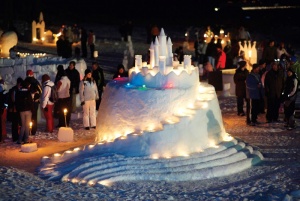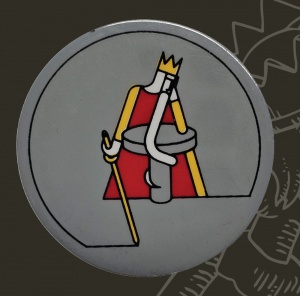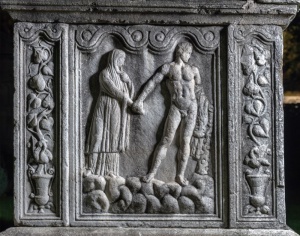Strength and Loyalty - King Matjaž and Alenčica
The recent floods of 2023 had people wishing that King Matjaž would awaken from his centuries-long sleep inside Mount Peca (Petzen). This desire was even stronger in the years after the Republic of Slovenia gained independence: a time when the Meža Valley and the rest of Slovenia’s Koroška region were gripped by an economic crisis that badly affected the social situation of the area’s inhabitants. In those days large signs depicting the figure of King Matjaž stood at the side of the main roads leading into the Meža Valley, marking this territory as his land.
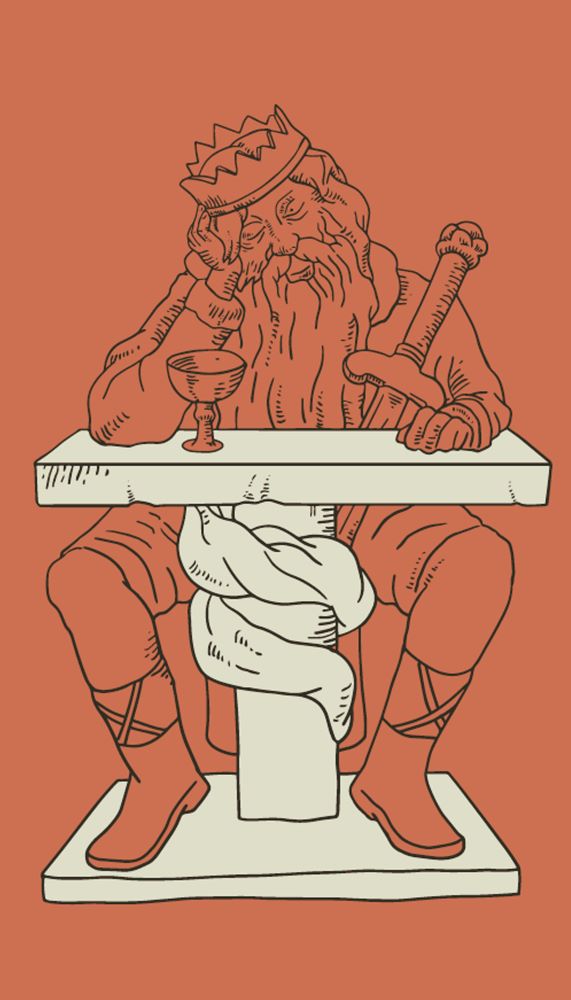
Interpretive Drawing of the sleeping King Matjaž.
Author: Gorazd Koščak
The first event involving the construction of snow castles for King Matjaž and Queen Alenčica using just snow, water, twigs and ice took place in Črna na Koroškem in 1992. This “icy fairy tale for a sleeping king” gives free rein to fantasy, which for one day in the year becomes a reality created using hands, a saw and snow shovels.
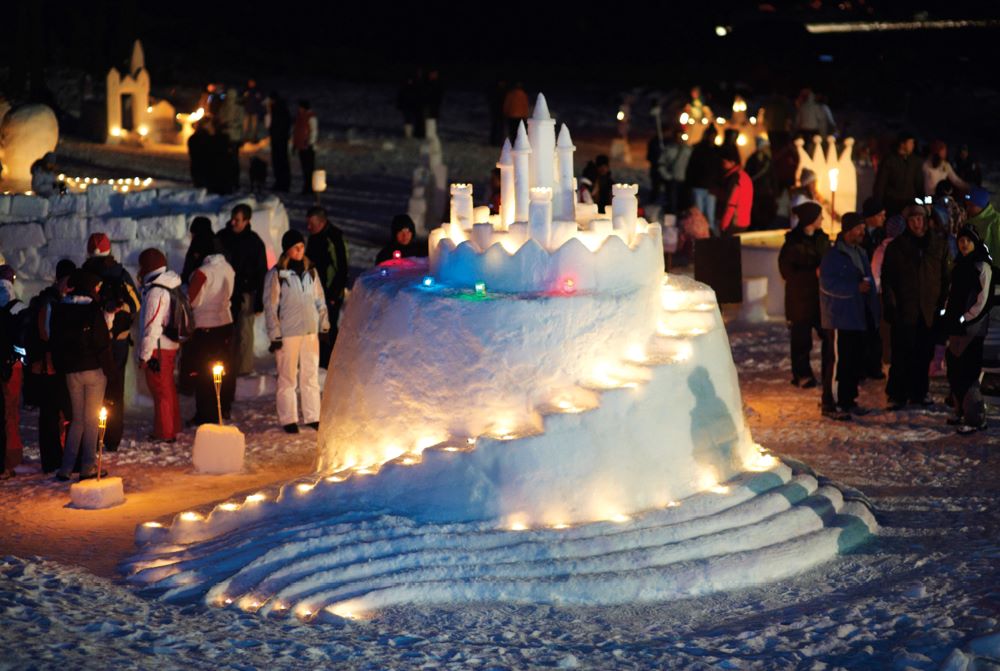
King Matjaž’s Castles, Črna na Koroškem, 2011.
Photo: Tomo Jeseničnik
This traditional hero, a national and social symbol of liberation, has been transformed into a brand. The mythical hero has frequently found a place in the creations of contemporary writers, artists and musicians, in which he assumes a role in the real world of today.
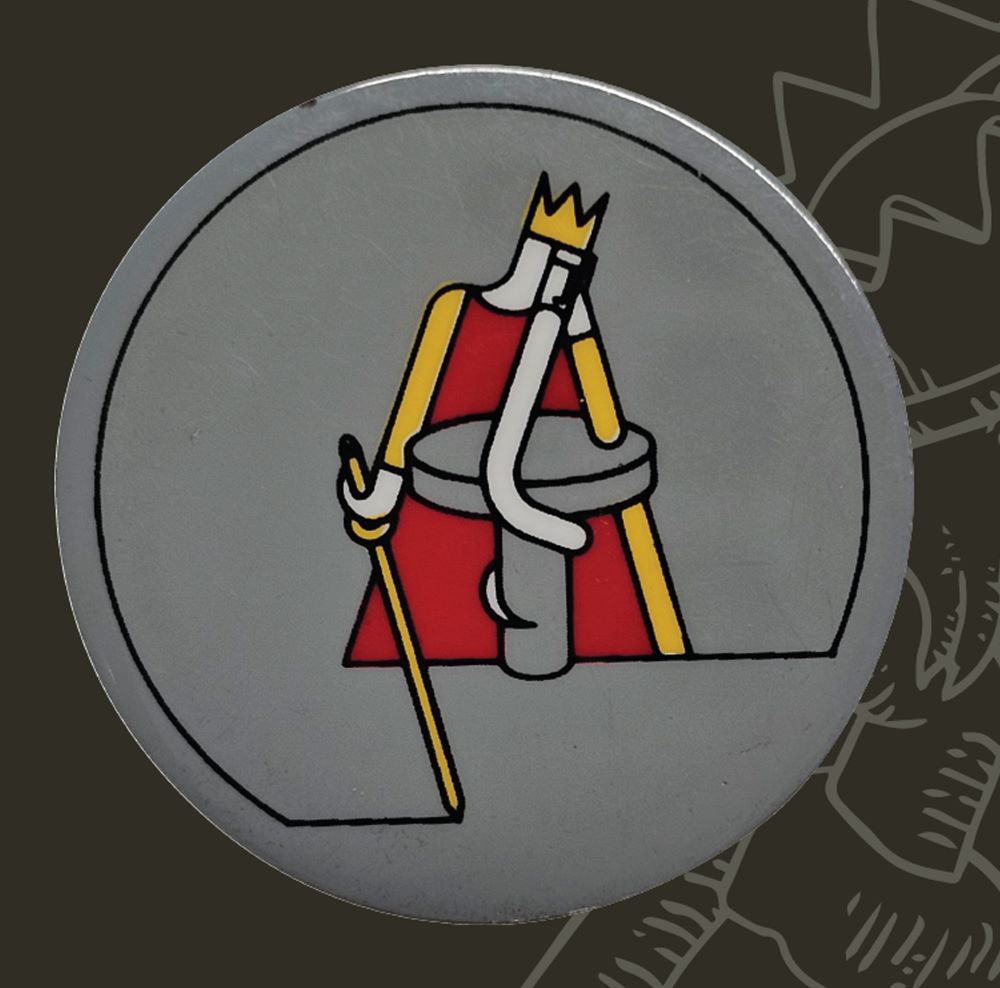
Figure of King Matjaž on a badge.
By Edi Koraca and Andrej Kotnik; 1992
The mythological tradition of King Matjaž still survives in central and eastern Europe and the northern Balkans. In Koroška it was preserved and disseminated by folk writers known as bukovniki. Cultural and political processes in the nineteenth century and the first half of the twentieth also contributed to its preservation. Although the spontaneous telling of tales about Matjaž is no longer a living tradition, the legend of King Matjaž who sleeps under Mount Peca and will wake up once his beard has wound itself seven times around a stone table has survived.
The trope of a king asleep in a cave deep underground is connected to the ancient Greek myths of Orpheus and Dionysus, both of whom descended into the underworld to recover someone dear to them. It is also connected to the Celtic myth of Cronus asleep in a cave and to that of Heracles, the greatest of the Greek heroes. The figure of Matjaž’s wife Alenčica is connected to the myth of the faithful wife Alcestis, who died in place of her husband, the king. The stories of Alcestis and King Matjaž are linked by loyalty and love as immortal values of a community.
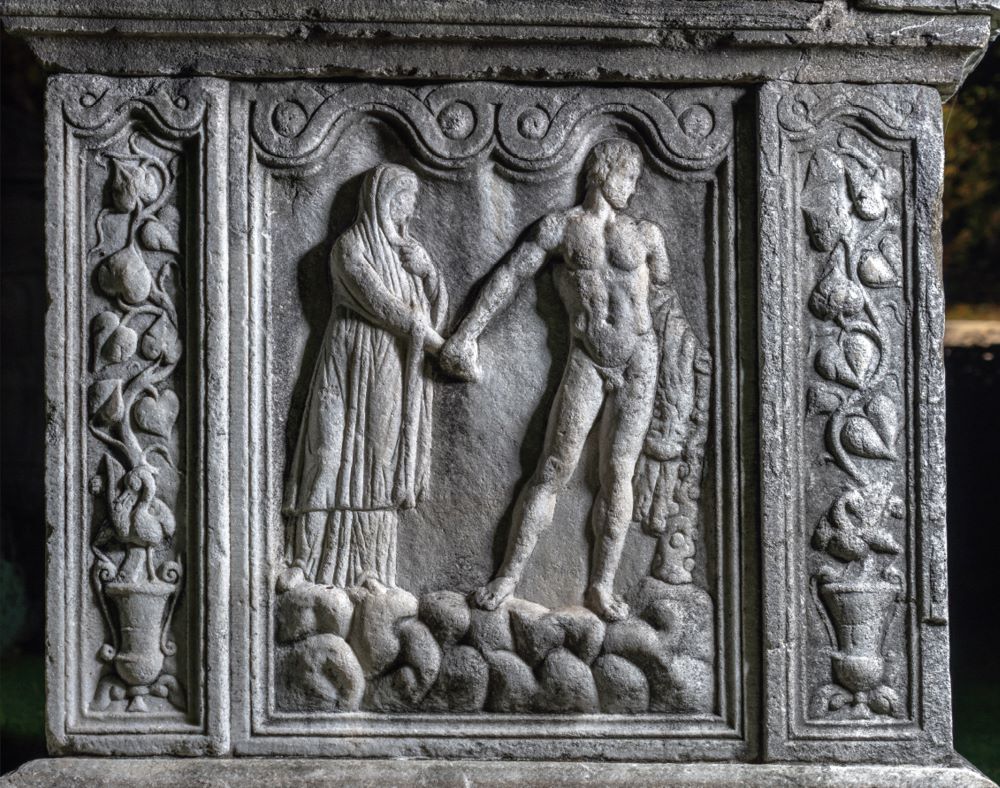
Alcestis and Heracles from the Vindonius Monument.
Photo: Ortolf Harl, Celje Regional Museum
Karla Oder, Verena Perko
Koroški pokrajinski muzej
Image Gallery and Catalogue of Museum Objects
